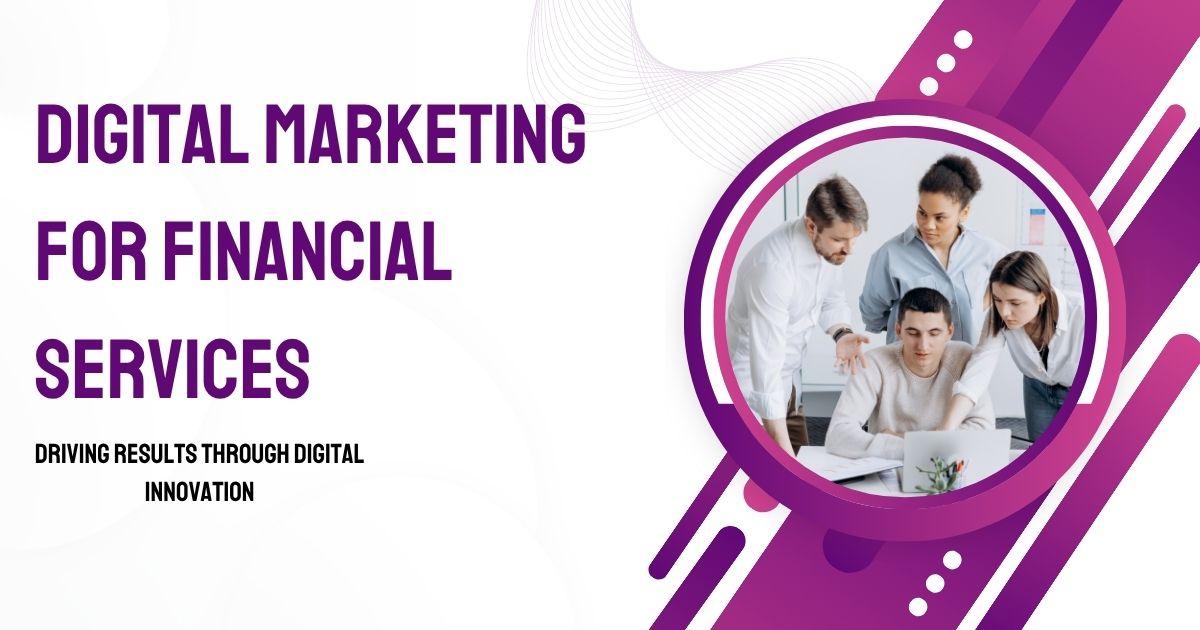The financial services sector is subject to intense competition and significant regulation, and it depends on trust. For companies in this space, connecting with customers, building trust, and differentiating from the competition is more important than ever. Enter digital marketing for financial services.
For financial services organizations, digital marketing is not a nice-to-have; it’s a must-have. This toolkit will guide you with tactical recommendations, making them specific to the industry realities of financial services, to create a digital marketing plan that generates growth, engagement, and trust.
Navigating The Financial Services Environment
Special Challenges and Opportunities
Financial activities present some issues, too. This industry, in particular, is complicated due to strict regulatory requirements, diverse customer demands, and a conservative audience. But opportunities abound in these challenges. For instance, more people are turning to the internet to research financial products and services, thereby allowing businesses the opportunity to reach audiences at the appropriate time via the most relevant digital channels.
The trick is to solve pain points and bring value upfront. Transparency, teachability, and a customer-first mentality will always differentiate a financial services brand in the digital space.
How do you write a digital marketing plan for financial services?

Defining Goals and Your Ideal Audience
Set goals: Before you start marketing your products, you need to set your goals of what you’re trying to achieve – could it be increased brand awareness, more leads generated, or driving customer retention? Clear, quantifiable objectives will help you keep your strategy on point and effective.
Audience segmentation is just as critical. “The financial institutions need to know the customer behaviors, financial literacy, and preferences. Surveys, feedback forms, and analytics can be helpful to get a handle on what your audience needs.
Pro Tip: Trying to reach millennials? Make sure you have a mobile-first approach to content. Reaching Gen X or Boomers? Just use simple, descriptive language.
SEO for Financial Services
Content writes to signal to search engines that it is optimized.
When most people think of SEO, the financial services sector isn’t the first thing that comes to mind, but it’s an industry that relies heavily on making its presence felt online. Every day your target group googles financial solutions and with a better spot in the search results, you are there when they are.
Here is how to up your SEO game in financial services:
-
Hit the Right Keywords: You can get ideas of what’s low-hanging fruit to target by using tools like Google Keyword Planner to research appropriate terms like “investment planning,” “best retirement accounts,” or “personal loans advice.”
-
Localize Your SEO: If you’re targeting a local audience, you need to localize your content with such keywords as “financial advisor in Chicago”.
-
Produce Great Content: Write blogs, whitepapers, and FAQs on general financial questions. Solve your customers’ problems for them in plain language.
-
Invest in Technical SEO: Ensure your site is mobile-friendly, increase site speed, and integrate a secure HTTPS protocol (trust is the number one issue for clients).
Financial Services Content Marketing

Building Trust and Authority
Trust is the bedrock of any financial relationship. Content quality work is going to help you in serving less-known and published information to your readers.
Most Common Financial Service Content Marketing Types:
-
Blogs & Articles: create content in the form of a blog post, financial planning tips, loan comparison, or investment FAQs.
-
Video Content: Produce explainer videos and how-to tutorials on complex financial subjects such as taxes or mortgages.
-
Storytelling: Share actual success stories of how your company has impacted customers.
Try to remember to make content easy to read and connect with it, especially for those who are not aware of the financial language.
Financial Services Social Media Marketing
Interacting with customers and developing relationships
AS social media becomes more so a place to educate and inform financial services customers. LinkedIn, Twitter, and Instagram are also effective sources of engagement.
How financial firms can do social media right:
-
LinkedIn: This is where you can practice thought leadership by sharing articles and whitepapers with insightful information and industry news.
-
Twitter: Share immediate news updates, customer service replies, and short financial pointers.
-
Instagram: Showcase community impact programs, events, and behind-the-scenes content to reinforce brand culture.
Leverage branded hashtags, live Q&A, and user-generated content to engage and educate your followers.
Email Marketing for the Finance Industry
Lead Generation & Conversion Optimization
Email is still a very strong marketing tool, especially for the highly personal business of financial services. Well-written emails can help with nurturing leads, driving sign-ups, and even re-engaging with existing customers.
Cannabis Email Marketing Tips:
-
Provide educational content such as budgeting guides or tax season tips.
-
Share news about discounts, specials, or free consultations.
-
Automate drip campaigns triggered by customer behavior, such as sending a reminder to finish an application a user has left half completed.
All great email marketing will provide value, be professional and hard sell, and have clear CTAs for readers to take action.
Paid Ads for Financial Services
Reaching a Wider Audience
PPC, or pay-per-click, can be a fast way to attract specific audiences. You can use platforms like Google Ads, Facebook Ads, and LinkedIn to use advanced targeting options that enable you to narrow your target to geography, demographics, and interests.
Work on writing attractive ad copy and compelling calls to action. A headline such as “Bultor Automatiserade Investeringar, semantically expressed via a visually attractive, secure landing page, could result in more conversions.
Measurement and Analysis of Outcomes
Monitoring of Key Metrics and Data-Driven Decisions
One of the big benefits of digital marketing is the ease with which success can be measured. By tracking performance and continuously tweaking strategies using tools such as Google Analytics and social platform insights, financial services companies can maximize efficiencies.
Key indicators to watch out for:
-
Website Traffic
-
Conversion Rates
-
Search Rankings
-
Cost Per Acquisition (CPA)
-
Laddering value Customer Lifetime Value (CLTV)
Consistently monitoring these metrics allows you to see what’s working, where to double down, and how to pivot tactics.
Case Studies
Successful Campaigns as Examples
Borrow from financial service companies like these:
-
Ally Bank doubled its Instagram following with a clever, informative campaign.
-
Betterment slashed the cost of customer acquisition by advertising specific keyword-targeted ads on search engines.
-
American Express created brand loyalty with exclusive LinkedIn content targeting small businesses.
Campaigns like this make it abundantly clear that being creative does not necessarily preclude the customer from the equation.
The Future of Digital Marketing for Financial Services
Trends and Predictions
Digital marketing in financial services – the future will be enabled by technology and driven by customer expectations. Some rising trends include:
-
Personalization with AI: AI will make personalized experiences possible, including hyper-targeted email outreach and AI chatbots providing instant investment recommendations.
-
Better Mobile Experiences: Perfecting for mobile will be essential as more people access financial services through cellphones.
-
Voice Search Optimization: As voice assistants take off, digital marketers will have to adjust their SEO approaches to match conversational search queries.
The right PR partner can elevate your brand visibility and media presence. This guide outlines how to choose the best digital PR agency in New York based on your business needs and goals.








Biometric Authentication: The Future of Banking Security
What is a Fintech Firm? Everything You Need to Know
What Is Financial Technology (FinTech)? Everything You Need to Know
Digital Twin Technology in Finance: How Virtual Models Are Transforming Risk Management
Digital Twin Technology in Finance: How Virtual Models Are Transforming Risk Management
The Future of Personal Finance: Autonomous Finance and AI Money Management
AI Credit Scoring: Revolutionizing SME Banking and Digital Loans
AI Fraud Detection: How Banks Prevent Financial Crime in Real Time